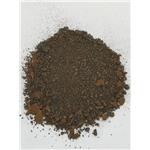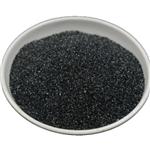- Lignin (Dealkaline)
-

- $400.00 / 2kg
-
2024-01-09
- CAS:9005-53-2
- Min. Order: 2kg
- Purity: >80%
- Supply Ability: 10tongs
- LIGNINE
-

- $50.00 / 1KG
-
2023-12-23
- CAS:9005-53-2
- Min. Order: 1KG
- Purity: 99%
- Supply Ability: g-kg-tons, free sample is available
- LIGNINE
-

- $1.00 / 1KG
-
2020-01-10
- CAS:9005-53-2
- Min. Order: 1KG
- Purity: 98% HPLC
- Supply Ability: 10 tons/month
|
| | Lignin Chemical Properties |
| storage temp. | Store at -20°C | | solubility | DMSO : ≥ 50 mg/mL;Water : < 0.1 mg/mL (insoluble) | | Merck | 14,5487 | | Stability: | Stable. Incompatible with strong oxidizing agents. | | EPA Substance Registry System | Lignin (9005-53-2) |
| | Lignin Usage And Synthesis |
| Description | An abundant phenylpropane polymer found in all vascular plants.
Lignin acts as the "glue" for cellulose and hemicellulose constit uents of plants, and the three substances comprise the major cell
wall components of cellulosic plants, e.g., woody and grassy
plants. These substances are bound tightly and may only be sep arated under vigorous conditions. Lignin finds use as a drilling
fluid additive, asphalt emulsion stabilizer, protein precipitant, rub ber strengthener and precursor for the synthesis of phenol, vanillin
and other products. | | Chemical Properties | The term "lignin" is derived from the Latin lignum for wood, and woody plants or parts of plants contain large quantities of this substance. lignin is an irnportant skeletal component of secondary cell walls and is thus not found in young plants or parts of plants that are still growing. It is lignin that provides the hardness and rigidity of tree trunks and the sterns of perennial plants. In the cell wall, lignin is bound to other components, notably hemicelluloses. The lignin-cellulose-hemicellulose complex has economic irnportance in the production of paper from wood. The strong bonds linking cellulosic material to lignin render the former inaccessible to enzyme hydrolysis, and thus lignin has a direct influence on the digestibility, and hence the nutritive value, of herbage plants to grazing animals. In herbage plants, lignin is also bonded to cell wall protein.
Lignification of plants affects the palatability of fruits and vegetables. Thus, the unpleasant "stone cells" in pears are due to lignification, and many root and stern crops, such as carrots, beetroot, celery or asparagus, when old become inedible through lignification. | | Occurrence |
Lignin is a 3-dimensional type of polymer of phenol elements with heavy-duty intermolecular bonding by strongly divided molecules. The main sources of lignins are coniferyl, p-coumaryl and sinapyl alcohols[1]. The intensity of lignin in wheat stems and roots is 4.4 and 5.6, which is considerably stronger (p < 0.001) than in wheat leaves. Lignin differs in composition between species. For example, the composition of the aspen specimen is 5.9% hydrogen, 63.4% carbon, 0.7% ash (mineral components), and 30% oxygen (by difference), conforming to the formula (C31H34O11)n.
| | Uses | Source of vanillin, syringic aldehyde, dimethyl sulfoxide, Lignin (Dealkaline) can be extender for phenolic plastics, to strengthen rubber (esp for shoe soles), as oil mud additive, to stabilize asphalt emulsions, to precipitate proteins. | | Biosynthesis |
Lignin biosynthesis is a very complex network that is divided into three processes: (i) biosynthesis of lignin monomers, (ii) transport, and (iii) polymerization. After a series of steps involving deamination, hydroxylation, methylation, and reduction, lignin monomers are produced in the cytoplasm and transported to the apoplast. Finally, lignin is generally polymerized with three main types of monolignols (sinapyl alcohol, S unit; coniferyl alcohol, G unit and p-coumaryl alcohol, H unit) by peroxidase (POD) and laccase (LAC) in the secondary cell wall. In addition, several other compounds, including hydroxycinnamaldehydes, tricin flavones, hydroxystilbenes xenobiotics, etc., have also been recognized as lignin subunits [2].
| | Agricultural Uses | The overall appearance of lichens is described as
crustose (they make a thin and flat crust on the
substratum), foliose or fruticose (upright, branched
forms, resembling shrubs). Lichens grow slowly from a
few millimeters to several meters each year. They
reproduce mostly by the development of apothecia or
perithecia, forming new lichens on germination of the
ascospores only in the presence of the algal partner in
whose absence the fungus dies.
Nearly 700 chemicals, which are unique to lichens,
help lichens to survive and ward off attacks by bacteria,
other fungi and grazing herbivores.
Lichens belong to soil-crust communities and help
stabilize soils, especially in desert areas. Cyanolichens contribute to fixing nitrogen to the ecosystem in which
they grow. LicheGare used for identifying the age of the
surface (on which they grow) by a technique, called
lichenometry..
Lichens are pollution indicators because of their
differential sensitivity to sulphur dioxide (SO2), nitrogen
dioxide (NO2) and ozone, as well as their ability to absorb
and accumulate heavy metals and radionuclides..
Substances like pigments, toxins, antibiotics, etc. are
obtained from lichens, which are especially useful as a
source of dyes (for example, Roccella, providing litmus),
medicines and perfumes. Some lichens, like Iceland moss
and reindeer moss, are used as food in arctic regions. | | References |
[1] Muhammad Waheed Riaz. “Role of Lignin in Wheat Plant for the Enhancement of Resistance against Lodging and Biotic and Abiotic Stresses.” Journal of Thermal Stresses 60 1 (2023).
[2] Qingquan Liu, Luqing Zheng, Le Luo. “Lignins: Biosynthesis and Biological Functions in Plants.” International Journal of Molecular Sciences 19 2 (2018).
|
| | Lignin Preparation Products And Raw materials |
|